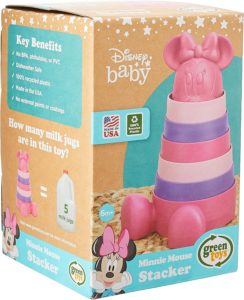As an Amazon Associate I earn from qualifying purchases.
Are you tired of dealing with irregular or painful menstrual cycles? Look no further, because the solution is here! “Menstrual Cycle Regulation” is your ultimate guide to understanding and managing your monthly cycles. This article provides valuable information and practical tips to help you regulate your menstruation, allowing you to feel more in control and comfortable throughout the month. Say goodbye to unpredictable cycles and hello to a balanced and well-regulated menstrual cycle. Read on to discover the secrets to a harmonious menstrual experience!
Hormonal Regulation
Role of Hormones in Menstrual Cycle
The menstrual cycle is primarily regulated by different hormones in the body. These hormones work together to ensure the proper functioning of the reproductive system. The main hormones involved in the menstrual cycle are estrogen and progesterone, which are produced by the ovaries. Estrogen primarily regulates the growth and development of the reproductive organs, while progesterone helps to prepare the uterus for pregnancy.
During the menstrual cycle, the levels of these hormones fluctuate. In the first half of the cycle, the levels of estrogen increase, stimulating the growth of the uterine lining. This is known as the follicular phase. Then, as ovulation approaches, there is a surge in luteinizing hormone (LH), which triggers the release of the mature egg from the ovary. This is followed by the luteal phase, where the levels of progesterone increase to prepare the uterus for possible pregnancy. If conception does not occur, the levels of both estrogen and progesterone drop, leading to menstruation.
Hormonal Imbalances and Menstrual Irregularities
Hormonal imbalances can disrupt the regularity of the menstrual cycle and lead to menstrual irregularities. Common hormonal imbalances that can affect the menstrual cycle include polycystic ovary syndrome (PCOS), thyroid disorders, and adrenal gland disorders. These conditions can cause irregular periods, heavy or light bleeding, and even missed periods.
When there is an excess of estrogen or a deficiency of progesterone, it can lead to conditions such as estrogen dominance or anovulation. Estrogen dominance occurs when the levels of estrogen are higher in relation to progesterone, which can result in heavy or prolonged bleeding. On the other hand, anovulation refers to the absence of ovulation, which can cause irregular or absent periods.
It is important to consult a healthcare professional if you experience any menstrual irregularities, as they can help identify and address the underlying hormonal imbalances contributing to the issue.
Lifestyle Factors
Effects of Exercise on Menstrual Cycle
Regular exercise plays a crucial role in maintaining a healthy menstrual cycle. Engaging in physical activity promotes overall well-being and can help regulate hormonal levels. Exercise has been shown to increase endorphin levels, improve blood circulation, and reduce stress, all of which can positively impact the menstrual cycle.
However, it is important to find a balance when it comes to exercise and the menstrual cycle. Intense or excessive exercise can sometimes lead to menstrual irregularities, including missed periods or amenorrhea (absence of menstruation). This is often seen in athletes or individuals who engage in strenuous training regimens.
On the other hand, a sedentary lifestyle can also affect the menstrual cycle. Lack of exercise can contribute to hormonal imbalances and lead to irregular or painful periods.
Impact of Diet on Menstrual Cycle
Maintaining a healthy diet can have a significant impact on the regularity and overall health of the menstrual cycle. A well-balanced diet provides essential nutrients that support hormonal balance and reproductive health.
Consuming a diet rich in fruits, vegetables, whole grains, and lean proteins ensures an adequate intake of vitamins and minerals. These nutrients are important for the proper functioning of the reproductive system and can help regulate hormonal levels.
In particular, certain nutrients are known to be beneficial for menstrual cycle regulation. For example, foods rich in omega-3 fatty acids, such as fatty fish, walnuts, and flaxseeds, have anti-inflammatory properties and can help alleviate menstrual pain and reduce the severity of PMS symptoms.
On the other hand, consuming excessive amounts of processed foods, sugary snacks, and caffeinated beverages can disrupt hormonal balance and contribute to menstrual irregularities. It is important to maintain a balanced and nutritious diet to support a healthy menstrual cycle.

Stress Management
Stress and Menstrual Irregularities
Stress can have a significant impact on the menstrual cycle. When you experience stress, the body releases stress hormones such as cortisol, which can interfere with the normal hormonal balance.
High levels of stress can disrupt the regularity of the menstrual cycle and lead to irregular or skipped periods. Stress can also exacerbate premenstrual syndrome (PMS) symptoms, such as mood swings, irritability, and bloating.
Chronic stress can also contribute to hormonal imbalances by affecting the hypothalamic-pituitary-adrenal (HPA) axis, which plays a crucial role in regulating hormone production. This can result in conditions such as hypothalamic amenorrhea, where the menstrual cycle stops due to the suppression of hormone production.
Techniques to Manage Stress
Managing stress is essential for maintaining a healthy menstrual cycle. There are several techniques that can help reduce stress and promote relaxation:
-
Exercise: Engaging in regular physical activity, such as yoga, walking, or swimming, can help reduce stress levels and promote a sense of well-being.
-
Meditation and mindfulness: Practices such as meditation, deep breathing exercises, and mindfulness can help calm the mind and reduce stress.
-
Journaling: Writing down thoughts and feelings can help release stress and provide a sense of clarity.
-
Social support: Connecting with friends, family, or support groups can provide emotional support and help alleviate stress.
-
Self-care: Taking time for self-care activities, such as taking a bath, reading a book, or engaging in a hobby, can help reduce stress and promote relaxation.
By incorporating stress management techniques into your daily routine, you can support a healthy menstrual cycle and overall well-being.
Herbal Remedies
Common Herbs for Menstrual Cycle Regulation
Many herbs have been traditionally used to regulate and support a healthy menstrual cycle. While research on the effectiveness of herbal remedies is limited, some herbs have shown promising results in alleviating menstrual symptoms and promoting hormonal balance.
-
Chaste tree berry: Also known as Vitex, chaste tree berry is commonly used to regulate the menstrual cycle and relieve symptoms of PMS. It is believed to act on the pituitary gland, helping to balance hormone levels.
-
Black cohosh: This herb has been used for centuries to relieve menstrual pain and regulate the menstrual cycle. It is thought to possess anti-inflammatory properties and may help alleviate hormonal imbalances.
-
Dong quai: Dong quai is often called the “female ginseng” and is traditionally used to promote menstrual regularity and alleviate menstrual pain. It is believed to have estrogen-like effects and can help balance hormone levels.
Benefits and Side Effects of Herbal Remedies
While herbal remedies have been used for centuries to support menstrual health, it is important to understand their potential benefits and side effects.
The benefits of using herbal remedies for menstrual cycle regulation include:
-
Natural approach: Herbal remedies provide a natural alternative to pharmaceutical medications for menstrual health.
-
Reduced symptoms: Some herbs have shown promising results in reducing menstrual pain, regulating the menstrual cycle, and alleviating PMS symptoms.
-
Holistic approach: Herbal remedies focus on supporting overall well-being and promoting hormonal balance, rather than just targeting specific symptoms.
However, it is important to note that herbal remedies may also have potential side effects and risks. It is always recommended to consult a healthcare professional before using herbal remedies, especially if you have any underlying medical conditions or are taking other medications.
Common side effects of certain herbs may include gastrointestinal upset, allergic reactions, or interactions with other medications. It is important to carefully research and choose reputable sources when considering the use of herbal remedies for menstrual health.

Medication and Supplements
Types of Medications for Menstrual Cycle Regulation
In some cases, medications may be prescribed to regulate the menstrual cycle or alleviate specific menstrual symptoms. The type of medication recommended will depend on the underlying cause of the menstrual irregularities.
-
Hormonal contraceptives: Birth control pills, patches, or hormonal intrauterine devices (IUDs) may be prescribed to regulate the menstrual cycle. These medications contain synthetic hormones that help regulate hormonal levels and prevent ovulation.
-
Nonsteroidal anti-inflammatory drugs (NSAIDs): NSAIDs, such as ibuprofen or naproxen, can help relieve menstrual pain and reduce inflammation. They work by inhibiting the production of prostaglandins, which are responsible for triggering menstrual cramps.
-
Progestin therapy: Progestin-only medications, such as medroxyprogesterone acetate, may be prescribed to regulate the menstrual cycle. These medications mimic the effects of progesterone and help regulate hormonal balance.
Potential Side Effects and Risks of Medications
It is important to be aware of the potential side effects and risks associated with medications used for menstrual cycle regulation. Common side effects of hormonal contraceptives may include nausea, headaches, breast tenderness, and mood changes. In some cases, hormonal contraceptives may increase the risk of blood clots, especially in individuals who smoke or have a history of blood clotting disorders.
NSAIDs can cause gastrointestinal side effects, such as stomach upset or ulcers, especially if taken for an extended period of time or at high doses.
Progestin therapy may cause side effects such as weight gain, breast tenderness, and irregular bleeding. It is important to discuss potential risks and side effects with a healthcare professional before starting any medication.
Alternative Therapies
Acupuncture for Menstrual Cycle Regulation
Acupuncture is a traditional Chinese medicine practice that involves the insertion of thin needles into specific points on the body. It is believed to stimulate the flow of energy, known as Qi, and restore balance in the body.
Acupuncture has been used to regulate the menstrual cycle and alleviate menstrual symptoms. It is thought to help balance hormone levels and improve blood circulation to the reproductive organs. Some studies have shown promising results in reducing pain, regulating menstrual cycles, and improving overall well-being.
It is important to consult a licensed acupuncturist who specializes in women’s health if you are considering acupuncture for menstrual cycle regulation. They can assess your individual needs and tailor a treatment plan accordingly.
Other Alternative Therapies
In addition to acupuncture, there are other alternative therapies that have been used to support menstrual health:
-
Herbal supplements: Certain herbal supplements, such as evening primrose oil or St. John’s wort, have been used to alleviate menstrual symptoms and promote hormonal balance. It is important to consult a healthcare professional before taking any herbal supplements to ensure safety and effectiveness.
-
Infrared therapy: Infrared therapy involves the use of infrared light or heat to relieve menstrual pain and promote relaxation. It is thought to help improve blood circulation and reduce inflammation in the pelvic area.
-
Aromatherapy: Certain essential oils, such as lavender or clary sage, have been used to alleviate menstrual pain and promote relaxation. They can be used in massage, bath soaks, or diffusers to create a soothing atmosphere.
It is important to note that alternative therapies may not have the same level of scientific evidence as conventional medical treatments. It is always recommended to consult a healthcare professional before starting any alternative therapy to ensure safety and appropriateness.
Medical Treatments
Surgical Procedures for Menstrual Cycle Regulation
In some cases, surgical procedures may be recommended to address underlying causes of menstrual irregularities. These procedures aim to restore hormonal balance or alleviate specific conditions that may be affecting the menstrual cycle.
-
Endometrial ablation: This procedure involves the removal or destruction of the uterine lining to reduce heavy menstrual bleeding. It is typically recommended for individuals who do not wish to have children in the future.
-
Hysterectomy: In severe cases of menstrual irregularities, a hysterectomy may be recommended. This involves the removal of the uterus and can effectively stop menstruation. It is only recommended as a last resort when all other treatment options have been exhausted.
It is important to discuss the potential risks, benefits, and alternatives with a healthcare professional before considering any surgical procedure for menstrual cycle regulation.
Other Medical Interventions
In addition to surgical procedures, other medical interventions may be recommended to address specific underlying causes of menstrual irregularities:
-
Treatment of underlying conditions: If hormonal imbalances or underlying medical conditions are contributing to menstrual irregularities, appropriate treatment will be recommended. This may involve hormone therapy, thyroid medication, or other targeted treatments.
-
Fertility treatment: If you are experiencing difficulty getting pregnant due to irregular menstrual cycles, fertility treatment may be recommended. This may include medications to induce ovulation, intrauterine insemination (IUI), or in vitro fertilization (IVF).
It is important to work closely with a healthcare professional to determine the most appropriate medical interventions for your specific needs.
Birth Control Methods
Hormonal Birth Control
Hormonal birth control methods, such as birth control pills, patches, injections, or hormonal IUDs, are commonly used to regulate the menstrual cycle. These methods contain synthetic hormones, such as estrogen and/or progestin, which help regulate hormonal levels and prevent ovulation.
Hormonal birth control can provide several benefits for menstrual cycle regulation:
-
Regularity: Hormonal birth control can help regulate the menstrual cycle and make periods more predictable.
-
Reduced menstrual pain: Hormonal birth control can often reduce the severity of menstrual cramps and alleviate other menstrual symptoms.
-
Lighter periods: Some hormonal methods can cause lighter periods or even lead to a decrease in the frequency of periods.
It is important to discuss the potential side effects, risks, and benefits of hormonal birth control methods with a healthcare professional before deciding on the most appropriate option for you.
Non-hormonal Birth Control
Non-hormonal birth control methods are also available for individuals who prefer not to use hormonal methods or have medical conditions that contraindicate their use. These methods primarily work by preventing fertilization or implantation of a fertilized egg.
-
Barrier methods: Barrier methods, such as condoms, diaphragms, or cervical caps, physically prevent sperm from reaching the egg.
-
Intrauterine devices (IUDs): Non-hormonal IUDs, such as the copper IUD, work by creating an inhospitable environment for sperm. They are highly effective and can provide long-term contraception.
-
Natural family planning: Natural family planning methods involve tracking menstrual cycles and avoiding intercourse during fertile periods. This method requires dedicated monitoring and careful adherence to the tracking methods.
It is important to discuss the effectiveness and potential risks of non-hormonal birth control methods with a healthcare professional to determine the most suitable option for you.
Menstrual Products
Types of Menstrual Products
There is a wide range of menstrual products available to manage menstrual bleeding. Each product offers different features to cater to individual preferences and needs. Here are some common types of menstrual products:
-
Menstrual pads: Pads are absorbent materials worn externally to collect menstrual blood. They come in different sizes and thicknesses to accommodate varying flow levels.
-
Tampons: Tampons are small, cylindrical materials inserted into the vaginal canal to absorb menstrual blood. They come in different absorbency levels to cater to individual flow.
-
Menstrual cups: Menstrual cups are flexible cups made of medical-grade silicone or latex that are inserted into the vagina to collect menstrual blood. They can be reusable or disposable and offer a more sustainable option.
-
Pantyliners: Pantyliners are thinner and smaller versions of menstrual pads that are used for light flow or as backup protection with tampons or menstrual cups.
-
Period underwear: Period underwear is specially designed underwear that has built-in absorbent layers to collect menstrual blood. They offer a more sustainable and comfortable option for managing menstrual flow.
Choosing the right menstrual product depends on personal preferences, lifestyle, and flow intensity. It may take some trial and error to find the most suitable product for you.
Choosing the Right Menstrual Product
When choosing a menstrual product, consider the following factors:
-
Comfort: Choose a product that feels comfortable and does not cause any discomfort or irritation.
-
Absorbency: Consider your flow intensity and choose a product with the appropriate absorbency level to prevent leaks.
-
Ease of use: Some products may require a learning curve, especially menstrual cups. Consider your comfort level with inserting and removing products.
-
Environmental impact: If sustainability is important to you, consider reusable options such as menstrual cups or period underwear.
-
Convenience and discretion: Consider the convenience of changing and disposing of the product, as well as the discretion it offers in different situations.
It is important to try different products and experiment to find what works best for you. Remember, everyone’s menstrual needs and preferences are unique, and finding the right product may require some exploration.
Healthy Habits
Maintaining a Healthy Lifestyle
Maintaining a healthy lifestyle is essential for supporting a healthy menstrual cycle. Here are some key habits to incorporate into your routine:
-
Balanced diet: Focus on consuming a balanced diet that includes a variety of fruits, vegetables, whole grains, and lean proteins.
-
Regular exercise: Engage in regular physical activity to support overall well-being and regulate hormonal levels. Aim for at least 30 minutes of moderate-intensity exercise most days of the week.
-
Adequate sleep: Prioritize getting enough sleep to support hormonal balance and overall health. Aim for 7 to 9 hours of quality sleep per night.
-
Stress management: Practice stress management techniques, such as exercise, meditation, or hobbies, to reduce stress levels and promote hormonal balance.
-
Hydration: Stay hydrated by drinking an adequate amount of water throughout the day. Proper hydration supports overall health and helps maintain a healthy menstrual cycle.
Self-care Practices for Menstrual Cycle Regulation
In addition to maintaining a healthy lifestyle, incorporating self-care practices can help support a healthy menstrual cycle:
-
Relaxation techniques: Engage in relaxation techniques such as deep breathing exercises, meditation, or mindfulness to promote relaxation and reduce stress levels.
-
Warm baths or heating pads: Soaking in a warm bath or using a heating pad on the lower abdomen can help alleviate menstrual pain and promote relaxation.
-
Gentle exercise: Engage in gentle exercise, such as yoga or walking, to promote blood circulation, reduce stress, and alleviate menstrual symptoms.
-
Pamper yourself: Take time for self-care activities that make you feel good, such as reading a book, taking a bath, or engaging in a hobby.
-
Track your menstrual cycle: Keep track of your menstrual cycle using a calendar or a menstrual tracking app. This can help identify patterns or irregularities and provide a better understanding of your body’s rhythms.
By incorporating these healthy habits and self-care practices into your lifestyle, you can support a healthy menstrual cycle and overall well-being.
In conclusion, hormonal regulation plays a crucial role in maintaining a healthy menstrual cycle. Understanding the role of hormones, managing lifestyle factors, practicing stress management techniques, exploring herbal remedies, and considering medical interventions or birth control methods can all contribute to menstrual cycle regulation. Additionally, choosing the right menstrual products, maintaining healthy habits, and incorporating self-care practices can further support a healthy and balanced menstrual cycle. Remember to consult a healthcare professional for personalized guidance and recommendations based on your specific needs.
Amazon and the Amazon logo are trademarks of Amazon.com, Inc, or its affiliates.










